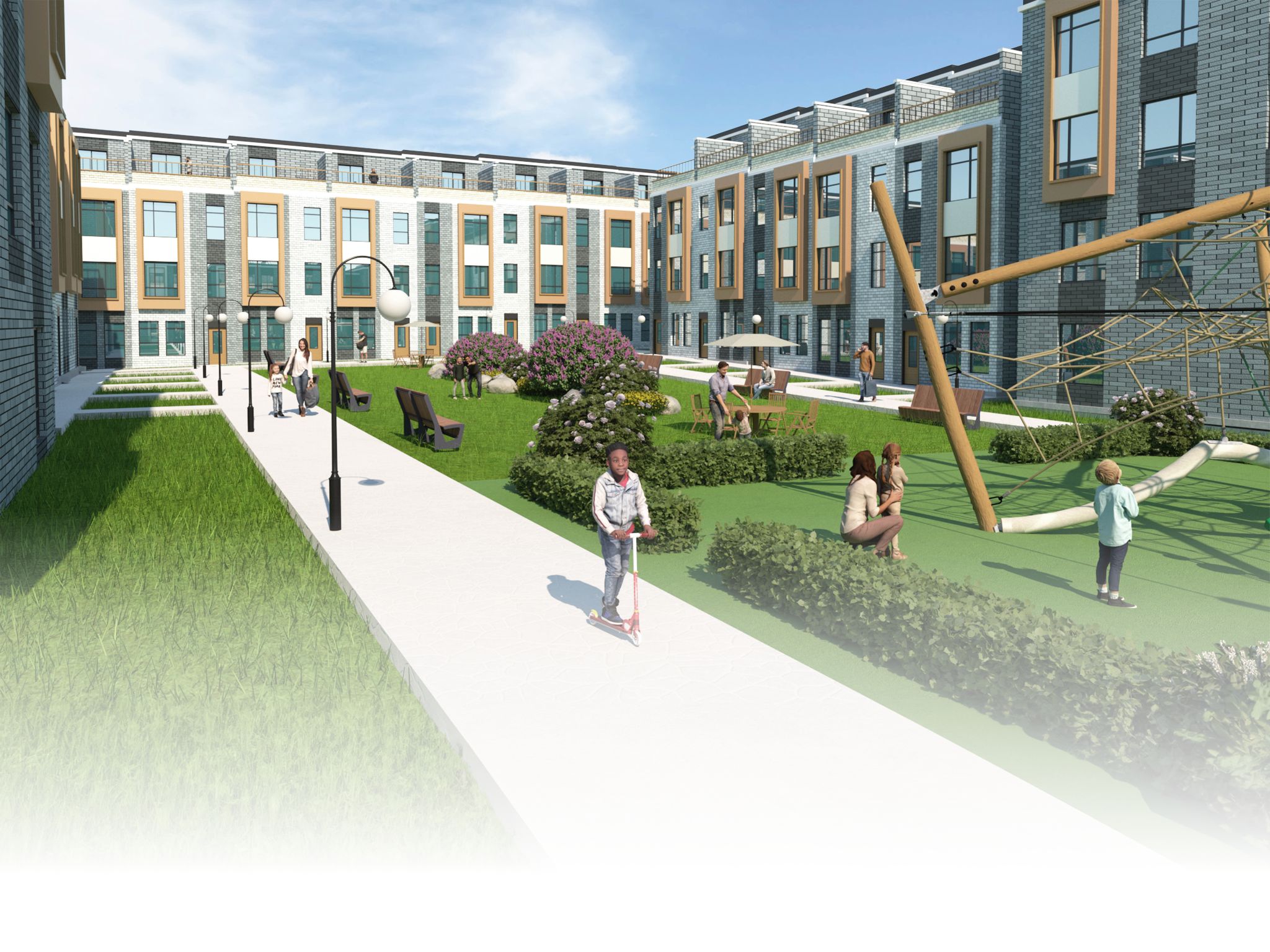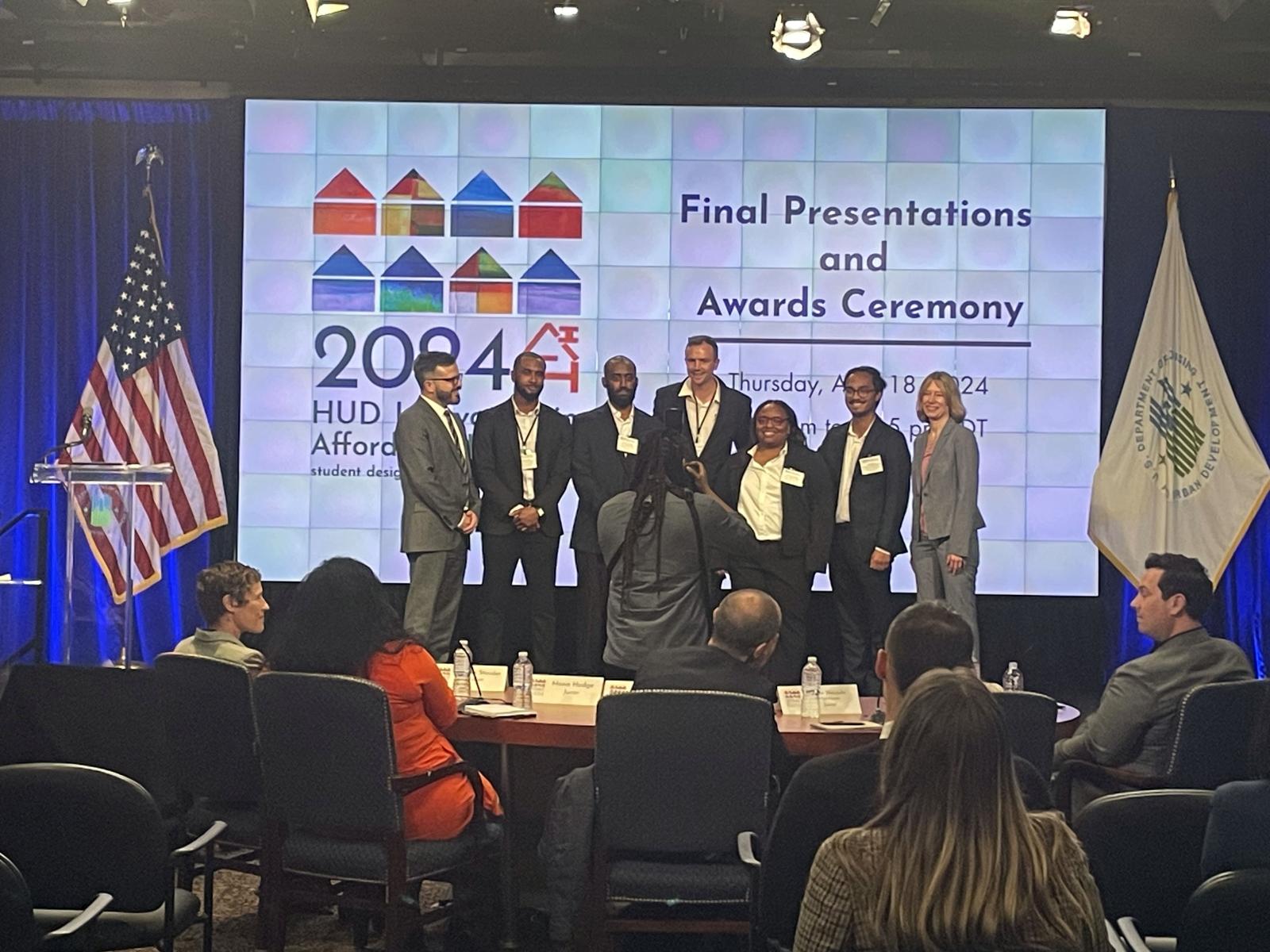An interdisciplinary graduate student team from the University of Maryland School of Architecture, Planning and Preservation has advanced to the final four in the Department of Housing and Urban Development (HUD) 2024 Innovation in Affordable Housing Student Design and Planning Competition. They will compete for the winning title on April 18 in Washington, D.C., at HUD Headquarters.
This is the seventh time that Maryland has made the final four in the competition’s 11-year history. Maryland took first place in 2018, 2019 and 2022, and placed in the final four in 2016, 2020 and 2023 for their multidisciplinary projects.
“HUD is honored to work with some of our country’s greatest budding minds to develop new, creative ways to build affordable housing,” said HUD Secretary Marcia L. Fudge in a press release. “This competition drives innovation, imagination and inspiration–three traits we need to ensure one day each American will have access to the housing they deserve.”
The team will compete against two teams from University of California-Berkeley and a team from Harvard University next month. Maryland’s team consists of students from the architecture, planning and real estate programs. Team Maryland is: Jesse Bardsley (URSP), Dejuan Johnson (ARCH), Adrian Mora (ARCH), Abdureuf Hussien (ARCH) and Tinesha Richardson (RDEV). Architecture professor Georgeanne Matthews serves as the team’s faculty advisor and Robert McClennan and Mansur Abdul-Malik are the professional advisors.
Each year, the IAH competition invites graduate students from multiple disciplines to respond to an existing affordable housing design and planning issue. After they submit their initial applications, finalists are selected by a panel of industry experts in a blind review.
Matthews said it feels great to be one of the final four teams in this year's competition. She credits Colvin Institute of Real Estate Development director Maria Day-Marshall for the school’s continuous participation in the competition.
“I think it's indicative of what our students are able to do, and it's one of the strengths of our program and our interdisciplinary foundation,” Matthews said.
The finalists visited the project site in Madison, Wisconsin, two weeks ago to further refine their projects. There, they met individuals from Romnes Senior Apartments, the Madison Community Development Authority, the office of the mayor and the HUD officials organizing the competition.
"This whole experience shows just how intricate and collaborative a process urban development, especially in housing, really is,” said architecture graduate student Dejuan Johnson. “In addition to our interdisciplinary team of architects, planners, and real estate students, there are community members, community and government organizations and other stakeholders that are all invested and play a role in impactful projects such as these.”
Over the next two weeks, the team will meet weekly to revise and strengthen their proposal submission. The winning team will receive $20,000.
“Interdisciplinary collaboration is in the DNA of who we are and the experiences we provide to our students from day one of their studies,” said Dawn Jourdan, Dean of the School of Architecture, Planning and Preservation. “The students who participate on our HUD Affordable Housing Competition team represent the best of the best. They are talented, creative, and believe deeply in the magic of bringing their ideas and energies together.”
Register here to attend the final presentations and awards ceremony. The event will also be streamed live via webcast.
Learn more about HUD’s IAH competition.



